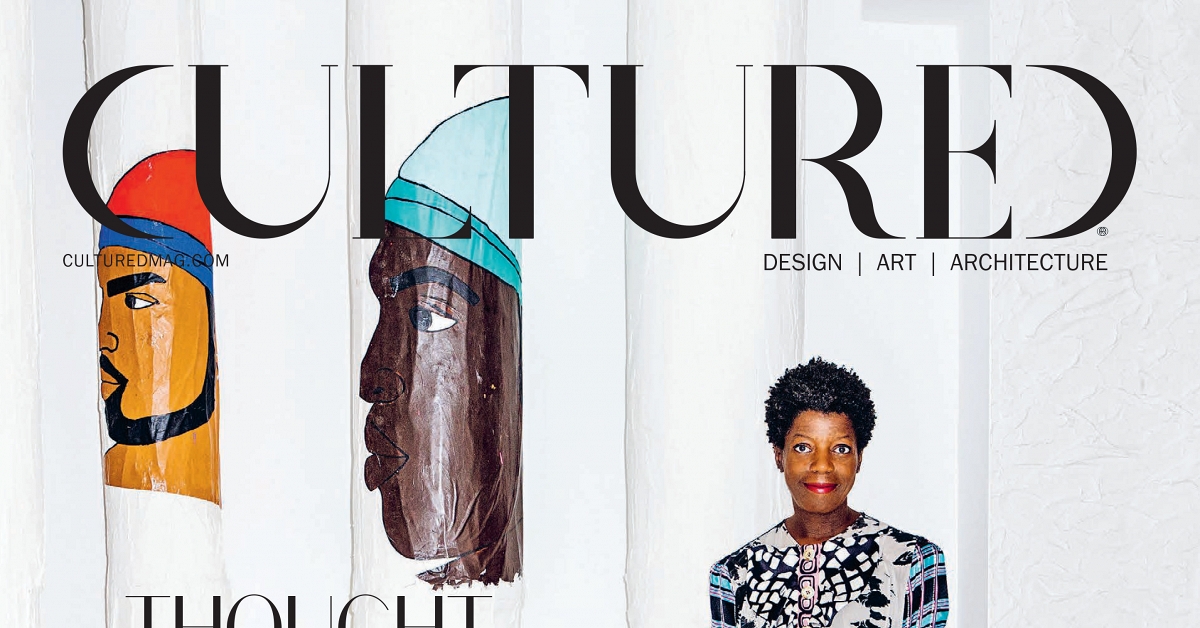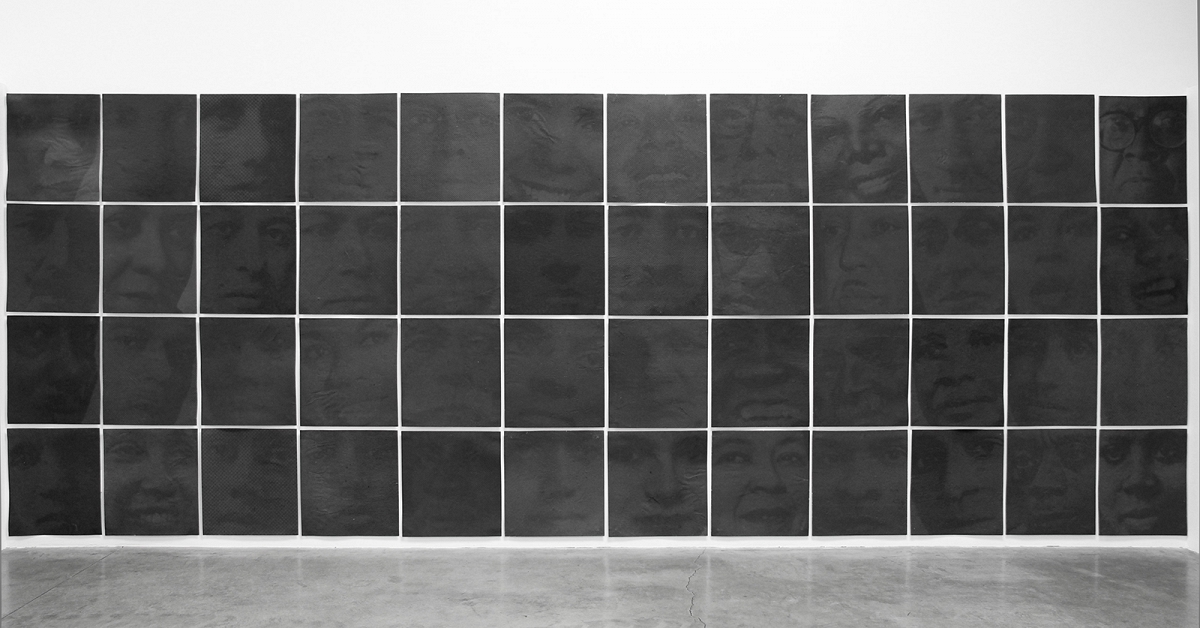At Triumph Gallery, more than 150 artists counteract a GOP watch list
Chicago Reader / May 24, 2018 / by Kate Sierzputowski / Go to Original
Late last fall, right-wing nonprofit Turning Point USA started a website called the Professor Watchlist, which singles out college professors who “discriminate against conservative students and advance leftist propaganda,” according to a mission statement on its home page. Curator Ruslana Lichtzier was appalled by the site, so she decided to organize an exhibition in response. She personally asked more than 300 friends and acquaintances to submit works as a counteraction to Professor Watchlist’s directives. “The Dangerous Professors,” hosted at Triumph gallery in Pilsen (where Lichtzier is codirector), features 154 pieces created by solo and collaborative artists, educators, and writers. Through a variety of visual mediums, the participants advance forms of education increasingly deemed “dangerous” since the presidential election.
Although Professor Watchlist is now mostly inactive, Lichtzier still found it important to assemble “The Dangerous Professors” as a statement against such Web-hosted fearmongering. “The way I see it is the site is a symptom of a larger thing,” Lichtzier explained to me. “The moment that you start intimidating freedom of thought, freedom of creativity, and radical education strategies, I see intimidation. It might shift its form, but it is there. When you say a website like Professor Watchlist isn’t important, you are undermining a large fact.”
Some educators used the exhibition’s platform as a chance to highlight teacher-student relationships by presenting student work instead of their own. Alex Chitty, a lecturer at the School of the Art Institute of Chicago, submitted seven sculptures produced by her Intro to Sculpture class at SAIC, collectively titled Doing Everything Possible With Possibly Nothing. Other participants display collaborations with students: Ryan Coffey (codirector of Triumph) and his student R. Treshawn Williamson contributed a text piece called Spellcheck Anomaly, which reflects on the constructs of institutionalized and “professional” language in opposition to Ebonics with two versions of the same letter side by side, one handwritten and the other edited and typed.
The credentials of “The Dangerous Professors” participants were less important to Lichtzier than the ways that each one identified as an educator, whether as a parent, a leader of an after-school program, or simply an artist who educates through his or her personal practice. Several contributors chose not to make something specifically designed for the exhibit. Artists like Cole Pierce, Allison Wade, Leslie Baum, Lise Haller Baggesen, Cathy Hsiao, and others provided drawings, paintings, and sculptures that don’t differ from the aesthetics of their other work. A political perspective is difficult to distill from the tessellated surface of Pierce’s painting #144 or Hsiao’s collected purple concrete sculptures Us + Mary Miss Material, yet these pieces are as exciting as the more activist selections—they demand visitors read the associated bios, which articulate how each artist operates or educates “dangerously.” Submitting seemingly nonpolitical work is a more covert gesture, a subtle self-labeling that can have just as much impact. “By reversing the power structure and calling yourself or your own practice dangerous, it breaks down the power structure and opens up and reveals the mechanism behind it,” Lichtzier says.
One of the reasons Lichtzier, who was born in Russia and raised in Israel, chose to come to the U.S. was her wish to more closely and critically examine the mechanism behind America’s “capitalist machine,” she says. Lichtzier was able to secure a green card in the U.S. in 2015 (it’s up for renewal at the end of this year); however, she’s experienced the extremely difficult process of applying for an O-1 visa, which requires that individuals possess extraordinary ability or have a record of extraordinary achievement. She was eager to invite other artists who are still working toward their own legal place in the U.S. In some cases, even though they were educators in their home country, they’re unable to teach here.
Several participants created works that reference the limitations placed on their presence in the United States as foreigners. Indian artist Udita Upadhyaya’s Uncertain States, for example, is a multicolored ink-on-paper composition that was inspired by her immigration status. By putting ink down on paper to pool and dry without significant intervention, Upadhyaya captures her feelings of uncertainty. Azadeh Gholizadeh, an Iranian artist, also addresses this unease in Other Chaos, a print on paper of sectioned-off rooms, a reference and reaction to her own geographical and physical boundaries after the passage of Executive Order 13769, Trump’s travel ban, aka the “Muslim ban.”
One of the most successful pieces is University of Washington assistant professor Dan Paz’s Professor Is Watching, a website built for the “The Dangerous Professors” that publishes responses from professors targeted by Professor Watchlist; it’s an attempt to overshadow, subvert, and dispel the original site. This online work will outlast the exhibit, as will a collection of writings from participants in “The Dangerous Professors.” Lichtzier prompted contributors to explain three major concerns they face as artist-educators and the strategies they’re implementing to overcome these challenges. The 80-page result will be released in its first draft at Triumph on Thursday, May 25, at a reception from 6 to 10 PM. Lichtzier hopes to one day publish it as a book, but in the meantime the text will exist as a publicly accessible PDF, a catalyst to build solutions for the many problems facing citizen and noncitizen educators and artists in Trump’s America
Although Professor Watchlist is now mostly inactive, Lichtzier still found it important to assemble “The Dangerous Professors” as a statement against such Web-hosted fearmongering. “The way I see it is the site is a symptom of a larger thing,” Lichtzier explained to me. “The moment that you start intimidating freedom of thought, freedom of creativity, and radical education strategies, I see intimidation. It might shift its form, but it is there. When you say a website like Professor Watchlist isn’t important, you are undermining a large fact.”
Some educators used the exhibition’s platform as a chance to highlight teacher-student relationships by presenting student work instead of their own. Alex Chitty, a lecturer at the School of the Art Institute of Chicago, submitted seven sculptures produced by her Intro to Sculpture class at SAIC, collectively titled Doing Everything Possible With Possibly Nothing. Other participants display collaborations with students: Ryan Coffey (codirector of Triumph) and his student R. Treshawn Williamson contributed a text piece called Spellcheck Anomaly, which reflects on the constructs of institutionalized and “professional” language in opposition to Ebonics with two versions of the same letter side by side, one handwritten and the other edited and typed.
The credentials of “The Dangerous Professors” participants were less important to Lichtzier than the ways that each one identified as an educator, whether as a parent, a leader of an after-school program, or simply an artist who educates through his or her personal practice. Several contributors chose not to make something specifically designed for the exhibit. Artists like Cole Pierce, Allison Wade, Leslie Baum, Lise Haller Baggesen, Cathy Hsiao, and others provided drawings, paintings, and sculptures that don’t differ from the aesthetics of their other work. A political perspective is difficult to distill from the tessellated surface of Pierce’s painting #144 or Hsiao’s collected purple concrete sculptures Us + Mary Miss Material, yet these pieces are as exciting as the more activist selections—they demand visitors read the associated bios, which articulate how each artist operates or educates “dangerously.” Submitting seemingly nonpolitical work is a more covert gesture, a subtle self-labeling that can have just as much impact. “By reversing the power structure and calling yourself or your own practice dangerous, it breaks down the power structure and opens up and reveals the mechanism behind it,” Lichtzier says.
One of the reasons Lichtzier, who was born in Russia and raised in Israel, chose to come to the U.S. was her wish to more closely and critically examine the mechanism behind America’s “capitalist machine,” she says. Lichtzier was able to secure a green card in the U.S. in 2015 (it’s up for renewal at the end of this year); however, she’s experienced the extremely difficult process of applying for an O-1 visa, which requires that individuals possess extraordinary ability or have a record of extraordinary achievement. She was eager to invite other artists who are still working toward their own legal place in the U.S. In some cases, even though they were educators in their home country, they’re unable to teach here.
Several participants created works that reference the limitations placed on their presence in the United States as foreigners. Indian artist Udita Upadhyaya’s Uncertain States, for example, is a multicolored ink-on-paper composition that was inspired by her immigration status. By putting ink down on paper to pool and dry without significant intervention, Upadhyaya captures her feelings of uncertainty. Azadeh Gholizadeh, an Iranian artist, also addresses this unease in Other Chaos, a print on paper of sectioned-off rooms, a reference and reaction to her own geographical and physical boundaries after the passage of Executive Order 13769, Trump’s travel ban, aka the “Muslim ban.”
One of the most successful pieces is University of Washington assistant professor Dan Paz’s Professor Is Watching, a website built for the “The Dangerous Professors” that publishes responses from professors targeted by Professor Watchlist; it’s an attempt to overshadow, subvert, and dispel the original site. This online work will outlast the exhibit, as will a collection of writings from participants in “The Dangerous Professors.” Lichtzier prompted contributors to explain three major concerns they face as artist-educators and the strategies they’re implementing to overcome these challenges. The 80-page result will be released in its first draft at Triumph on Thursday, May 25, at a reception from 6 to 10 PM. Lichtzier hopes to one day publish it as a book, but in the meantime the text will exist as a publicly accessible PDF, a catalyst to build solutions for the many problems facing citizen and noncitizen educators and artists in Trump’s America






